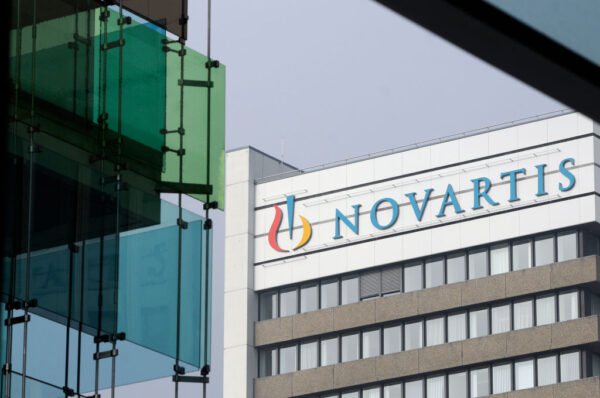
Novartis is building up its pipeline of cancer therapies with the acquisition of MorphoSys, a company whose lead drug is on track for an FDA submission for the treatment of myelofibrosis. But the €2.7 billion deal could raise scrutiny from antitrust regulators because Novartis already has a stake in another drug commercialized in this blood cancer.
After the markets closed on Monday, Novartis announced it is acquiring MorphoSys for €68 per share. While that price is a modest premium to the company’s closing stock price Monday in Germany, shares had risen sharply due to speculation about an acquisition. In addition to regulatory approvals, the acquisition needs the acceptance of at least 65% of MorphoSys’s outstanding shares. The companies expect to close the deal in the first half of this year.

With the Rise of AI, What IP Disputes in Healthcare Are Likely to Emerge?
Munck Wilson Mandala Partner Greg Howison shared his perspective on some of the legal ramifications around AI, IP, connected devices and the data they generate, in response to emailed questions.
The key piece of the acquisition agreement is MorphoSys drug candidate pelabresib. Myelofibrosis, a cancer affecting the bone marrow’s ability to normally produce red blood cells, has several approved treatments from a class of drugs that block cancer-driving JAK proteins. Pelabresib stands apart from these JAK inhibitors as a small molecule designed to inhibit bromodomain and extra-terminal domain (BET) proteins, which can help cancers grow.
In Phase 3 results presented in December during the annual meeting of the American Society of Hematology, the MorphoSys drug, in combination with approved Incyte JAK inhibitor Jakafi, met its main goal of reducing spleen volume compared to treatment with Jakafi alone. But on a key secondary goal assessing symptom resolution, the pelabresib and Jakafi arm showed only a numerical improvement compared to Jakafi alone. Still, MorphoSys pointed to its drug’s ability to improve on the four hallmarks of myelofibrosis: enlarged spleen, anemia, bone marrow fibrosis, and disease-associated symptoms. The company said it intended to file for U.S. and European regulatory review of the drug. Novartis reiterated that plan, saying filings are planned for the second half of this year.
In a note sent to investors Tuesday, Leerink Partners analyst Andrew Berens wrote that the deal could spark rigorous regulatory scrutiny in the U.S. and Europe. Novartis holds outside-of-the-U.S. rights to Incyte’s Jakafi (Jakavi in the rest of the world). Pelabresib’s therapeutic overlap with Jakavi outside of the U.S. could raise concerns with the European Commission, Berens said. Also, since Novartis receives royalties from Incyte’s U.S. sales of Jakafi, U.S. antitrust regulators might weigh in on the deal. Berens noted that a similar issue arose in Pfizer’s $43 billion Seagen acquisition. To close that acquisition, Pfizer had to divest royalties for bladder cancer drug Bavencio to avoid overlap with Seagen’s Padcev, which is approved in the same indication.
Besides the royalties owed to Novartis from Incyte’s U.S. sales of Jakafi, Berens said the Federal Trade Commission could have concerns that Novartis’s interests in the drug outside of the U.S. could affect pelabresib R&D in myelofibrosis. Those interests could impede development of pelabresib, or pela, in myelofibrosis as part of combination with other JAK inhibitors, such as Swedish Orphan Biovitrum’s Vonjo and GSK’s Ojjaara.
“This could be perceived as giving Jakafi an unfair competitive advantage,” Berens said. “However, despite these concerns, we think that the companies may be able to find remedies that may include divestiture of the U.S. Jakafi royalty stream by Novartis, as well as developing pela in conjunction with other JAK agents.”
The other MorphoSys drug on the way to Novartis is tulmimetostat, which is in Phase 1/2 testing for advanced solid tumors or lymphomas. This small molecule blocks two proteins, EZH2 and EZH1. Both tulmimetostat and pelabresib came from MorphoSys’s $1.7 billion acquisition of Constellation Pharmaceuticals in 2021. That deal marked a strategy shift for MorphoSys, which for much of its history was a developer of antibody drugs, many of which were out-licensed to partners.
MorphoSys’s new path as a small molecule cancer drug developer hasn’t been entirely smooth. In 2022, MorphoSys cut the drug discovery work that came with the Constellation deal. Nearly a year ago, MorphoSys stopped all of its preclinical research to focus on its two clinical-stage cancer drug candidates.
Meanwhile, MorphoSys on Monday struck a separate deal to sell to Incyte its remaining rights to tafasitamab, an antibody drug for diffuse large B-cell lymphoma that’s marketed in the U.S. under the name Monjuvi (Minjuvi in the rest of the world). Under a prior agreement, the two companies collaborated on the clinical development and commercialization of the drug in the U.S. while Incyte had rights to the drug outside of the U.S. Under the new agrement, Incyte paid $25 million for the drug’s U.S. rights and will no longer owe milestone payments or royalties. MorphoSys will no longer continue to share in the drug’s profits. This agreement is effective immediately.
Photo: Sebastien Bozon/AFP, via Getty Images














